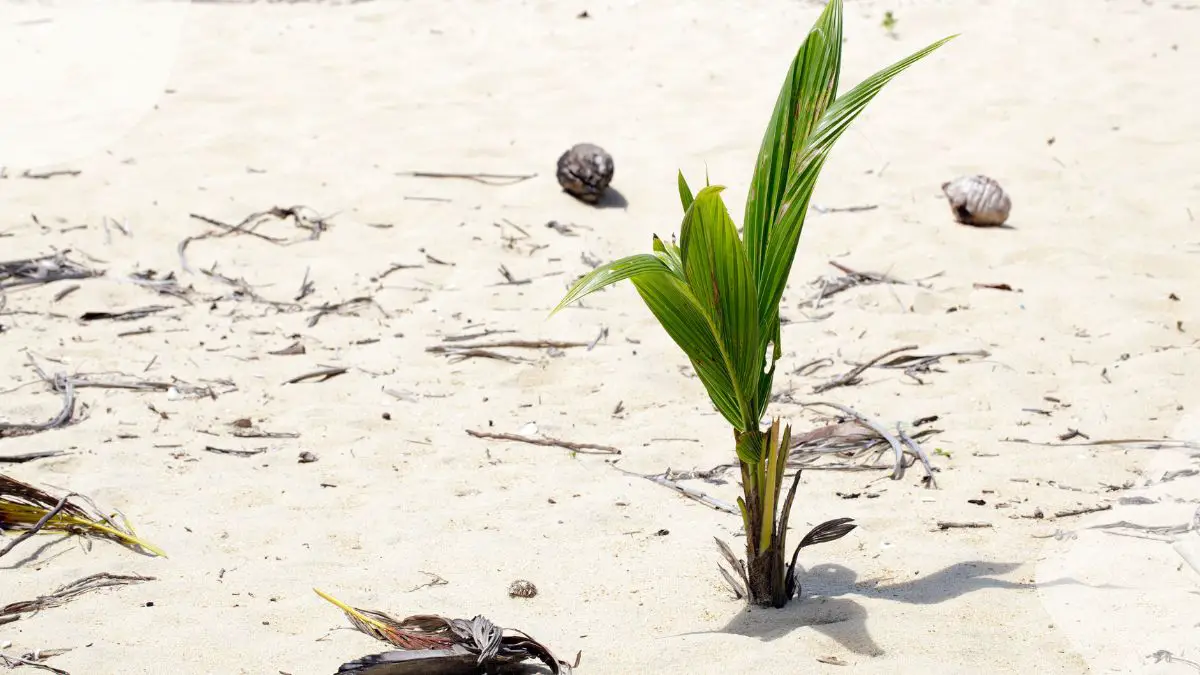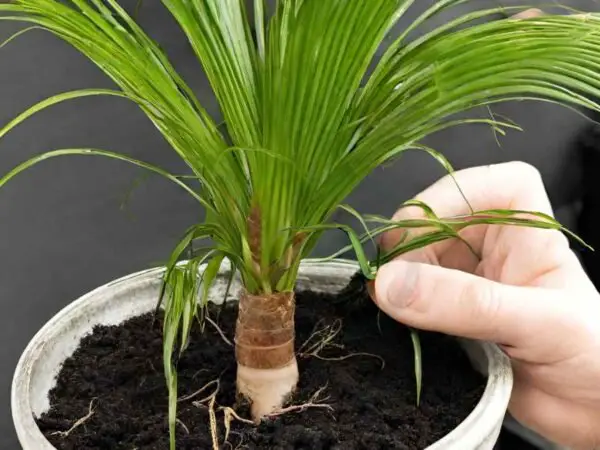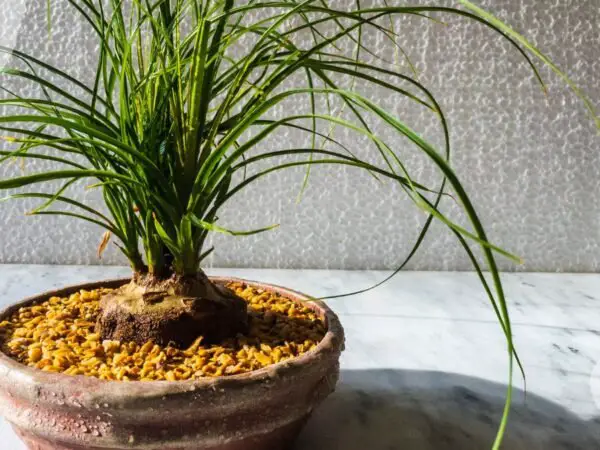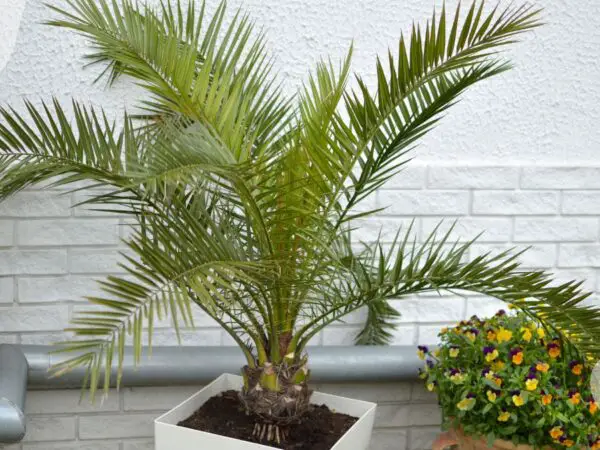Want to add a touch of the tropics to your space with potted palms? Growing a palm tree might be just what you need. These iconic trees have been gracing landscapes for centuries, symbolizing peace and relaxation.
Whether you're aiming for a backyard oasis or a lush indoor retreat, learning how to grow a palm tree can bring a slice of paradise to your environment. Follow our guide to cultivate these stunning plants and create your own little piece of paradise.
Choosing the Right Palm Tree
Climate Suitability
Identify suitable palm tree species based on your climate and location. Consider the light palm plant species that can thrive in cooler climates or indoors.
Size and Maintenance
When choosing palms, consider the size, growth rate, and maintenance requirements of different palm tree varieties.
Variety Selection
Look for popular palm trees that are hardy and can thrive in various environments. Consider different palms based on their adaptability to your area.
Preparing for Planting
Check Soil Temperature
Before planting a palm tree, it's essential to check the soil temperature. This ensures that the conditions are optimal for the tree's growth.
Ensure Proper Drainage
To prepare the planting site, focus on ensuring proper drainage. Adequate drainage helps prevent waterlogging, which can be detrimental to palm trees.
Gather Necessary Tools
Gather essential tools like shovels, mulch, and stakes before starting the planting process. These tools are crucial for successful planting of palm trees.
Planting Your Palm Tree
Digging Hole
When planting a palm tree, start by digging a hole that is twice as wide as the root ball's diameter. Ensure the hole is at the appropriate depth for planting.
Positioning Carefully
Plant the palm tree in the hole carefully, making sure that the trunk is level with the soil surface. This step is crucial for the tree's stability and growth.
Watering Thoroughly
After planting the palm tree in the hole, water it thoroughly. This helps in establishing the roots of the newly planted palm tree.
Palm Tree Care Essentials
Light Requirements
Understanding the proper palm tree care includes being aware of the light needs of your specific palm species. Different palms require varying levels of sunlight. Some thrive in full sun, while others prefer partial shade. Ensure you place your palm tree in a location that receives adequate sunlight based on its species.
To provide the ideal environment for your palm tree's growth, consider the amount of light it needs. Palms that require full sun should be placed in areas where they can receive direct sunlight for most of the day. On the other hand, palms that prefer partial shade should be positioned in locations where they are shielded from intense sunlight for part of the day.
Watering and Soil Considerations
Monitoring the palm needs for water and soil is crucial for maintaining a healthy palm tree. Overwatering or underwatering can harm your palm, so it's essential to find the right balance. Palms generally prefer well-draining soil to prevent waterlogging, which can lead to root rot.
When watering your palm tree, ensure that the soil is moist but not soggy. Stick your finger into the soil to check its moisture level before watering again. Consider factors like humidity levels and adjust your watering frequency accordingly. Palms in low-humidity environments may require more frequent watering compared to those in high-humidity regions.
Fertilization Schedule
Implementing a regular fertilization schedule is key to keeping your palm tree healthy and vibrant. Choose a fertilizer specifically formulated for palm trees and follow the instructions for application carefully. Proper fertilization provides essential nutrients that promote strong growth and lush foliage.
When fertilizing your palm tree, apply the fertilizer evenly around the base of the tree, avoiding contact with the trunk. Overfertilizing can be harmful, so it's crucial to follow recommended dosages. Depending on the type of fertilizer used, you may need to feed your palm tree every 3-4 months during the growing season for optimal results.
Pruning and Maintenance
Regular Trimming
Regularly remove dead fronds and fruit stems to promote the overall health of your palm tree. This practice prevents the accumulation of dead, decaying matter that can attract pests and diseases. By keeping the tree clean, you reduce the risk of potential issues.
Pest and Disease Management
Inspect the palm tree for pests and diseases, taking prompt action if any issues arise. Look out for common problems like palm aphids or fungal infections. Addressing these early on can prevent widespread infestations and damage to the tree.
Structural Support
Support the palm tree with bracing during strong winds to prevent damage. Installing braces around the trunk can help stabilize the tree and protect it from being uprooted during storms. This proactive measure ensures the longevity of your palm tree.
Potting and Repotting
Suitable Pot Size
When potting palm trees, choose a pot that provides ample space for root growth. Ensure the pot has proper drainage holes to prevent waterlogging, which can lead to root rot.
Repotting Frequency
Repot your palm tree every two to three years to avoid root-bound conditions. This practice allows the plant's roots to have enough room to grow and expand properly.
Potting Mix and Sunlight
Use a well-draining potting mix when potting or repotting your palm tree. This type of soil helps prevent water accumulation around the roots, reducing the risk of root rot. Ensure your potted palm receives adequate sunlight for optimal growth.
Troubleshooting Common Issues
Signs of Overwatering or Underwatering
Yellowing or browning fronds are common signs of overwatering or underwatering in palm trees. Adjust the watering frequency by checking the soil moisture level regularly. Ensure the soil is damp but not waterlogged to prevent root rot.
Adjusting Light Exposure and Nutrient Levels
To address yellowing or browning fronds, consider adjusting light exposure for your palm tree. Ensure it receives adequate sunlight without being exposed to direct harsh rays. nutrient deficiencies can cause discoloration in leaves. Fertilize your palm tree with a balanced fertilizer to provide essential nutrients.
Protecting Palm Trees from Cold Snaps
During cold snaps, insulate your palm tree by wrapping it with a blanket or burlap to protect it from frost damage. Alternatively, consider moving the palm tree indoors during winter to shield it from extreme cold temperatures. Ensure the indoor location receives sufficient sunlight.
Propagating Palm Trees
Seed Germination
Propagating palm trees can be done through various methods, with seed germination being a popular choice. To start, collect fresh palm tree seeds from new palms or common palm trees. Remove any old fronds to allow for better growth. Next, soak the seeds in warm water for a few days to soften the outer shell before planting them in a well-draining potting mix. Keep the soil consistently moist and place the pot in a warm, sunny location to encourage germination.
Offshoot Division
Another method for propagating palm trees is through offshoot division. Identify healthy offshoots growing at the base of large palm trees or coconut palm trees. Carefully separate these offshoots from the parent plant using a sharp, sterilized knife. Plant the offshoots in individual pots filled with well-draining soil. Provide adequate water and sunlight to promote root development and overall growth.
Providing Optimal Growing Conditions
To ensure successful palm tree propagation, it is crucial to provide optimal growing conditions for the seedlings. Maintain a warm and humid environment by covering the pots with plastic bags or placing them in a greenhouse. Water the seedlings regularly, ensuring that the soil remains moist but not waterlogged. Fertilize the young plants with a balanced palm fertilizer to support healthy growth.
Closing Thoughts
By now, you have gathered essential insights on choosing, planting, caring for, and troubleshooting palm trees. Remember, selecting the right palm tree sets the foundation for successful growth. Proper preparation and maintenance ensure your palm thrives in its environment. Regular pruning and attentive care will keep your palm tree healthy and vibrant. Whether you choose to pot, repot, or propagate, following these guidelines will lead to a flourishing palm tree in your space.
Now that you are equipped with the knowledge to nurture your palm tree effectively, take action. Apply these practices diligently to witness your palm tree thrive and enhance the beauty of your surroundings. Your commitment to these steps will result in a lush and striking palm tree landscape.
Frequently Asked Questions
How do I choose the right palm tree for my garden?
To choose the right palm tree, consider factors like climate, sunlight exposure, soil type, and space availability. Research different palm species to find one that suits your specific conditions and desired aesthetic appeal.
What are the essential care tips for maintaining a healthy palm tree?
Ensure your palm tree receives adequate water, sunlight, and nutrients. Regularly check for pests or diseases and address them promptly. Prune dead fronds and provide proper support to prevent toppling in strong winds.
When is the best time to plant a palm tree?
The best time to plant a palm tree is during the warmer months of spring or early summer when the soil is warm and conducive to root growth. Avoid planting during winter or periods of extreme heat to give your palm tree the best chance of establishing successfully.
How can I troubleshoot common issues with my palm tree?
Common palm tree issues include yellowing leaves, pest infestations, and nutrient deficiencies. Identify the specific problem by examining the symptoms and take appropriate actions such as adjusting watering frequency, applying fertilizer, or treating pests with organic solutions.
What is the process of propagating palm trees?
Palm trees can be propagated through seeds or offshoots (pups). Collect seeds from mature palms and sow them in well-draining soil. For offshoots, carefully separate them from the parent plant and replant in a suitable container with proper care to encourage root development.
Image Source: Paid image from CANVA





